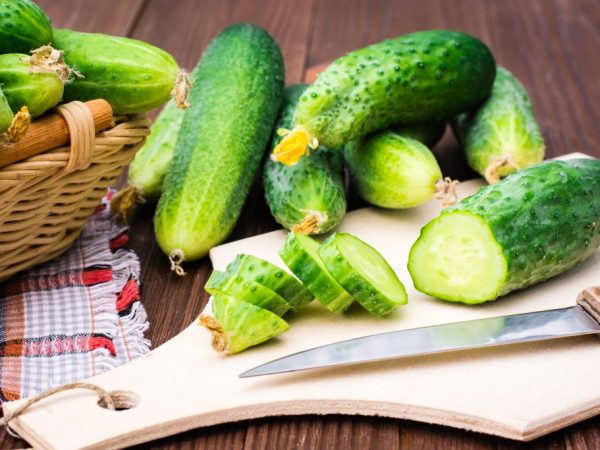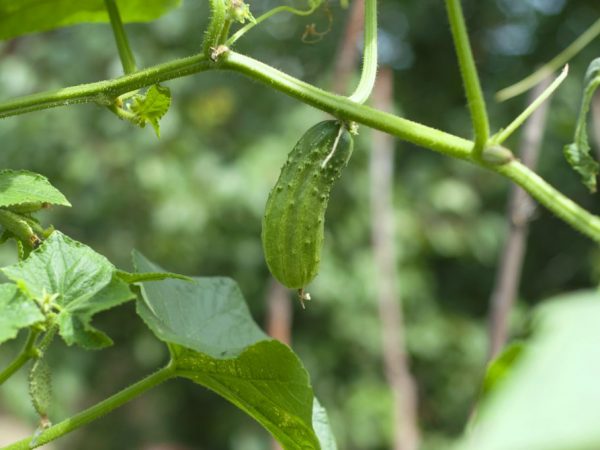Characteristics of salted cucumbers
It is difficult to imagine winter preparations without fragrant, canned cucumbers. And if fresh they are all similar in taste and do not differ much from each other, then not all types are suitable for salting and preservation. The pickled cucumber variety speaks for itself.

Characteristics of salted cucumbers
Breeders have developed this variety specifically for pickles. It bears fruit well, tastes good when fresh and is great for winter harvesting. Salted cucumber is in the characteristics of the best species for growing in the open field.
Characteristics of the variety
Salted cucumber is a mid-season species. From germination to first fruiting, an average of 55-60 days pass. It is grown in open ground conditions, since the plant requires pollination. It is not suitable for growing in a greenhouse. Characteristics and description of Salted cucumber:
- requires pollination;
- seed germination rate 95 - 98%;
- begins to bear fruit in 55 - 60 days after germination;
- high resistance to diseases;
- stable yield of 4–5 kg / m²;
- unpretentious to soil and weather.
Growing cucumber Pickling begins with sowing seeds. To obtain an earlier harvest of cucumbers, it is sown under film at the end of April. When the first shoots sprout, the film is removed. Standard sowing dates are mid to late May. By this time, the threat of frost has passed and the soil will warm up well. The optimum soil temperature for germination and good growth is 15 ° C.
Description of the bush
The bushes begin to bear fruit by the end of July, the beginning of August, they weave strongly. They have large green leaves and long stems. Mixed flowers, require insect pollination. The seeds are distinguished by good germination, and the plant itself is endurance and a long fruiting period. Garters are not required.
Description of fruits
A distinctive feature of the pickling cucumber are zelents of approximately the same size and regular cylindrical shape. The fruits taste good both fresh and preserved. Description of the pickled cucumber:
- average weight 100-120 grams;
- length from 10 cm to 13 cm;
- high content of vitamins;
- bitterness is absent.
With proper care, the fruits are of equal weight. Zelentsy's skin is thin, dark green in color. The tubercles are large with black spines at the ends. The fruits retain their color for a long time and do not turn yellow, even after being removed and stored indoors.
Despite the name, these cucumbers are good both fresh in salads and in winter preparations. The pulp is fragrant, crispy, the seeds are small. There are no voids. To obtain the greatest yield, green plants are removed in the phase of technical ripeness, preventing them from overgrowing. Technical ripeness occurs when the fruit reaches approximately 9 cm in length. The longer the greenery stays in the garden, the more it will grow and become less suitable for harvesting. Harvesting should be done every 2 to 3 days. Harvesting more frequently stimulates the plant to produce abundant and prolonged fruiting.
Care

Plant maintenance won't add to your hassle
The salting species is rather unpretentious both to the quality of the soil on which it grows and to the weather conditions. An inexperienced gardener can also grow it. For long-term fruiting and a good harvest, some rules are required:
- Well-lit areas are chosen for planting, avoiding dark places.
- It is better to pull the weeds with your hands, loosen the ground carefully, without affecting the root zone.
- Regular watering contributes to the formation of fruits of the correct shape and excellent taste.
- It is imperative that the bushes need to be fed, since the lack of mineral elements contributes to the deterioration of growth and resistance to diseases.
- When the first signs of a disease appear or pests are detected, measures must be taken to eliminate them immediately.
Seat selection
The optimal place for planting is those areas where previously there were potatoes, cabbage, peppers, tomatoes. They enrich the soil with certain elements necessary for the proper growth of the fruit.
Watering
For irrigation, settled water is used. It should be watered in the evening at the root to avoid possible burns on the leaves.
Top dressing
Feeding is not often worth it. Enough 2, maximum 3 dressings for the entire growing season. It is best to use organic fertilizers - 250 grams of droppings per 5 liters of warm water. Use the mixture as a liquid for watering bushes.
Garter
Since the plant sprouts long shoots, the question of tying is an individual matter.
The bush grows well both on trellises, and simply weaving along the ground. To attract insects, they are sprayed with a solution of sugar and water: 1 tsp. sugar per 1 liter of water. If the plant weakly lets out lateral shoots, then the upper, main stem must be pinched over the last leaf.
Diseases and pests
Pickled cucumber has good resistance to typical diseases. Excess moisture can provoke rotting of roots and leaves. In such cases, watering is stopped, the affected areas are sprinkled with ash, the leaves and stems are raised, improving air circulation.
The best way to prevent diseases is prophylactic treatment (spraying) of bushes with special antifungal agents. Purchase them at seed and garden supply stores. Spraying is carried out once for the entire growing season, no later than 20 days before fruiting.
There are no specific means for pest control. At the first signs of their presence, you should examine all the leaves, stems, remove bugs if possible. Sometimes it is enough to ventilate the bush, dry it, and the pests leave by themselves.
Conclusion
Pickled cucumber - picky bush of medium ripening. Cultivation is within the power of both beginners and professionals. It will delight you with a harvest of delicious fragrant greens by the end of July.
The fruits are distinguished by good keeping quality and long-term preservation of all taste and market qualities. Timely harvesting contributes to better fruiting.


